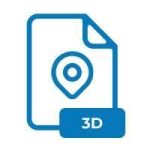.PDR File Extension

Windows Port Driver
| Developer | ProntoDoc Technologies |
| Popularity | |
| Category | System Files |
| Format | .PDR |
| Cross Platform | Update Soon |
What is an PDR file?
The .PDR file extension is associated with Windows Port Driver files. These files are used by the Windows operating system to manage communication between the computer’s hardware ports (such as serial and parallel ports) and the system’s software. They contain the necessary instructions for the operating system to correctly interface with and control hardware devices connected to these ports.
More Information.
The .PDR files were introduced to handle the increasing complexity of hardware management in Windows 95 and Windows 98. During this period, computers were becoming more advanced, with a greater variety of peripheral devices that required efficient communication protocols.
The primary purpose of .PDR files was to provide a standardized way for the operating system to manage these hardware connections.
Origin Of This File.
The .PDR file extension originated with early versions of the Windows operating system, specifically designed to facilitate the management of hardware drivers. These files were crucial for ensuring that the operating system could effectively communicate with a variety of hardware components.
File Structure Technical Specification.
.PDR files are binary files that contain low-level code written in assembly language or C. This code includes instructions for managing input and output operations, interrupt handling, and direct memory access (DMA) operations.
The structure of a .PDR file typically includes:
- Header: Contains metadata about the driver, such as version information and identifiers.
- Code Section: The executable code that performs the actual driver functions.
- Data Section: Variables and data structures used by the driver code.
- Resources: Additional resources required by the driver, such as firmware or configuration data.
How to Convert the File?
Windows
- Identify the Hardware: Determine which hardware device the .PDR file is associated with.
- Download Modern Drivers: Check the hardware manufacturer’s website for updated drivers compatible with your current version of Windows.
- Use Development Tools:
- Use the Windows Driver Kit (WDK) to develop new drivers.
- Use Visual Studio with WDK to write and compile the new driver.
- Testing: Test the new driver in a controlled environment before deploying it.
Linux
- Identify the Hardware: Determine which hardware device the .PDR file is associated with.
- Find Existing Drivers: Look for existing Linux drivers for the hardware. Many hardware components are already supported by the Linux kernel.
- Use Development Tools:
- Write a new driver using C and the Linux kernel development framework.
- Use tools like
gccfor compiling the driver.
- Testing: Test the driver using tools like
insmodandrmmodto insert and remove kernel modules.
Mac
- Identify the Hardware: Determine which hardware device the .PDR file is associated with.
- Find Existing Drivers: Look for macOS-compatible drivers on the hardware manufacturer’s website.
- Use Development Tools:
- Use Xcode and the IOKit framework to write new macOS drivers.
- Develop kernel extensions (kexts) if necessary.
- Testing: Use the
kextloadandkextunloadcommands to load and unload your driver during testing.
Android
- Identify the Hardware: Determine which hardware device the .PDR file is associated with.
- Find Existing Drivers: Check if there are Android-compatible drivers for the hardware.
- Use Development Tools:
- Write a new driver using the Android NDK and Linux kernel headers.
- Compile the driver using the Android build system.
- Testing: Test the driver on a rooted Android device using tools like
adb.
iOS
- Identify the Hardware: Determine which hardware device the .PDR file is associated with.
- Find Existing Drivers: Check for iOS-compatible drivers.
- Use Development Tools:
- Develop new drivers using Xcode and the IOKit framework.
- Since iOS is a closed system, developing low-level drivers may require special permissions from Apple.
- Testing: Use the iOS simulator and test on a physical device through Xcode.
Other Platforms
- Identify the Hardware: Determine which hardware device the .PDR file is associated with.
- Find Existing Drivers: Look for existing drivers or documentation for the specific platform.
- Use Development Tools:
- Write new drivers using the appropriate development tools and frameworks for the target platform.
- Compile the driver using the platform’s build tools.
- Testing: Follow the platform-specific procedures for testing and debugging hardware drivers.
Advantages And Disadvantages.
Advantages:
- Efficiency: .PDR files are designed for low-level hardware communication, providing efficient control over hardware ports.
- Standardization: Provides a standardized method for managing hardware devices across different Windows systems.
- Performance: Enables high-performance communication between the operating system and hardware devices.
Disadvantages:
- Compatibility: Limited to older versions of Windows (e.g., Windows 95, Windows 98), making them obsolete for modern systems.
- Complexity: Developing and maintaining .PDR files requires low-level programming knowledge, which can be complex and error-prone.
- Security: Low-level drivers can pose security risks if not properly managed, as they operate with high privileges.
How to Open PDR?
Open In Windows
- Use a hex editor such as HxD or Hex Fiend.
- Ensure you have administrative privileges to access system files.
Open In Linux
- Use a hex editor like
GHexorxxdto view the binary content. - Use tools like
stringsto extract readable text from the binary file.
Open In MAC
Use a hex editor like Hex Fiend to open and view the binary content.
Open In Android
- Use a file manager app that supports binary file viewing.
- Use a hex editor app available on the Google Play Store.
Open In IOS
- Use a file manager app that supports binary file viewing.
- Use a hex editor app available on the Apple App Store.
Open in Others
On other platforms, the general approach to examining .PDR files would involve using a hex editor to inspect the binary content. Tools such as hexedit (for Unix-based systems) or online hex editors can be utilized.













